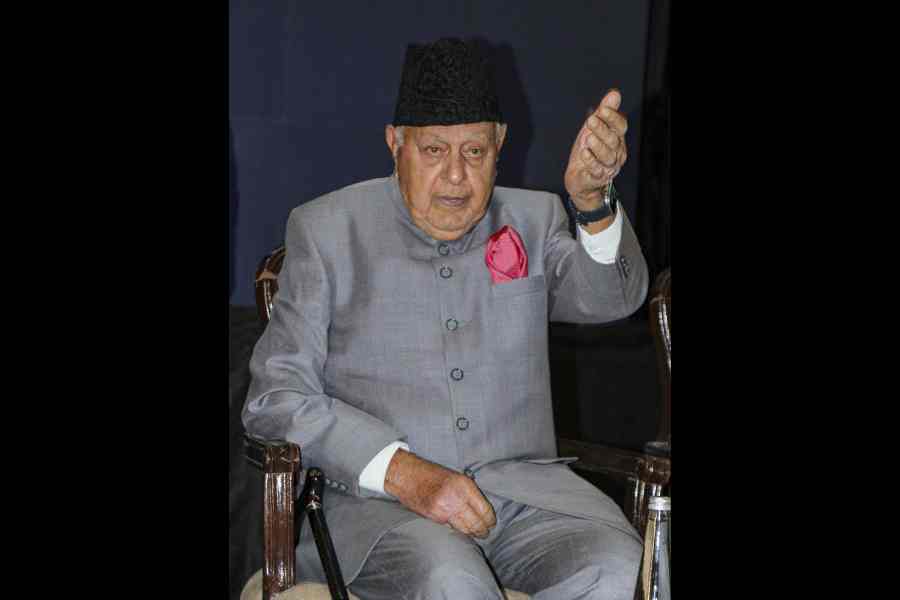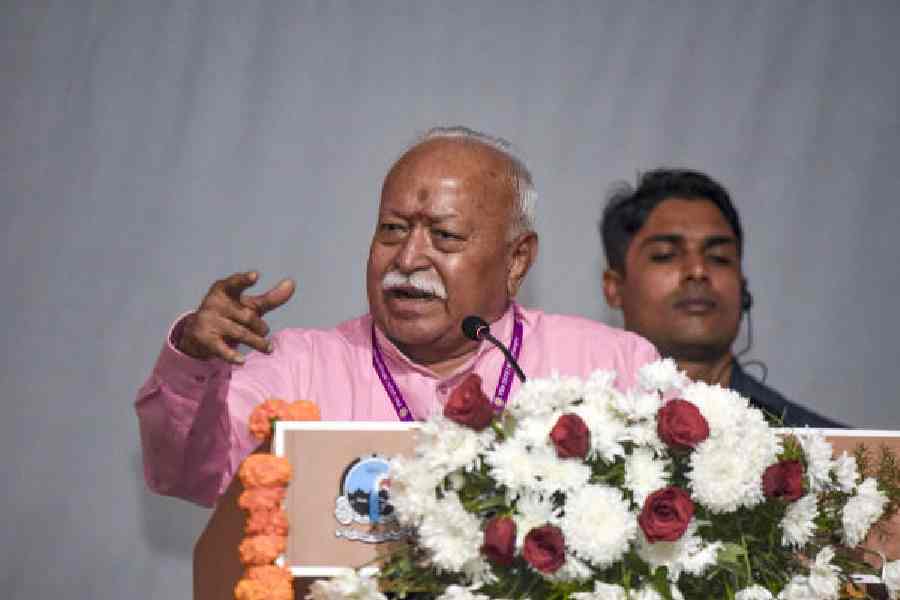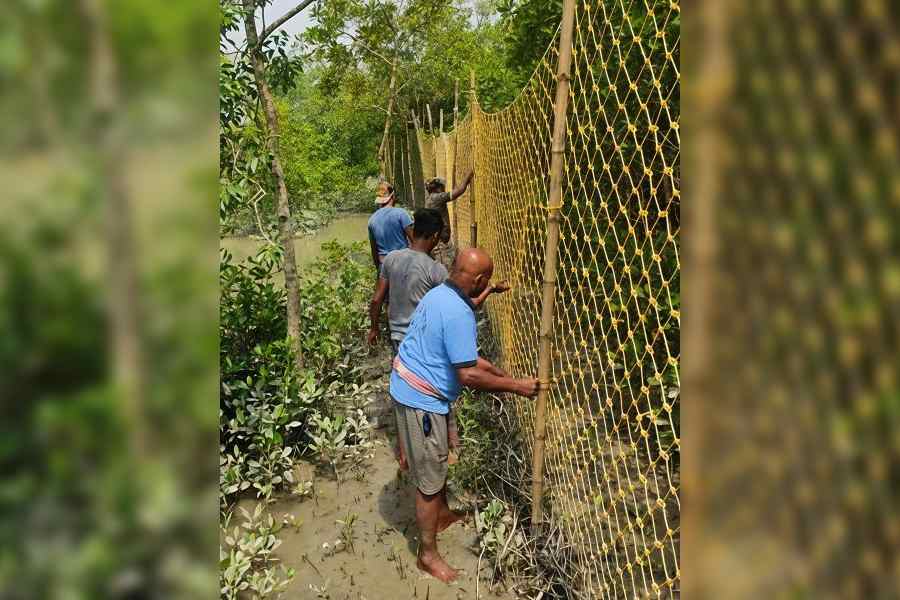
Crossings
THE WATER is cold where the lovers sit and the lake laps the shores of the stony bank. Their heavy-duty motorcycle is parked on a knoll. In the afternoon the magical blues of the Pangong Tso, the lake at 14,000 feet in eastern Ladakh, change hue with the sun and clouds and the shadows of barren mountains. Until a fast boat cuts through the middle of the waters, an urgent silvery swathe in an unhurried land.
" Lagta hai aaj phir mulaqat hogi (looks like we have another rendezvous today)," says Sonam. Sonam Rimphel, a retired soldier of the Ladakh Scouts, is driving our SUV on a rare tour of the Indian frontier with China in eastern Ladakh.
Sonam has seen the boat. It is a Tampa, a powerboat imported by the Indian Army from a Florida, US-based company. It has a medium machine gun mounted on it.

The army uses the Tampa to interdict Chinese patrols on the disputed lake. The day before we reached Thakung, a military establishment on the south bank of the Pangong Tso, three Indian patrol boats faced-off with three Chinese boats along a line on the water. Neither the Indian nor the Chinese (nor, indeed, anyone else) can see that line. Each side claims it knows where it runs. Neither side agrees with the other, of course; that is what protracted border disputes, such as India has with China and with Pakistan, are all about.
We've reached the western point of the lake at Lukung after crossing the 17,600 feet high Chang La, said to be the second highest motorable road in the world. The drive to Thakung, the last Indian point on the eastern shore of the lake, from Lukung is in the plains but it is rocky. The air is thin. We needed to acclimatise for three days before we left on this leg of the journey, and were tested for whether we were medically fit to take the lofty outing.
On the rocky south bank, our vehicle lurches over scree and stones, often kissing the waters. Then it zigs and zags away from the bank skirting the Ladakh range. It nearly hits the water again past the last point near a settlement called Man Merak, the point to where tourists, mostly bikers, are permitted and where the lovers had found their idyll. They can live in tented hotels: "Paradise Found", "Ladakh Sarai" and such.
Eastern Ladakh has a frontier with China that is east of the Karakoram and Ladakh Ranges. The frontier runs from the Karakoram Pass, 18 kilometres from the highest airfield at Daulat Beg Oldie, to Chumur, in the south, almost bordering Himachal Pradesh. Most of this 800-plus kilometre frontline is disputed.
.jpg)
The Pangong Tso is closer to the centre of this front. The lake is 135 kilometres long and five to seven kilometres in width. The mountains on the other side, the north bank, are a range called the Chang Chenmo. Like the Ladakh and the Karakoram, they are also barren. India holds about 40 square kilometres of the lake, the Chinese 90. The points at which the Indian claim ends and Chinese claim begins are yet to be recognised.

The day before we reached Thakung, patrol boats of the two sides came face to face on the water. In a stand-off that lasted nearly 50 minutes, officers and men of either side spoke to each other through loudhailers.
This is what happens when India and China meet on the turquoise waters. As soon as observers sitting on surrounding hilltops spot a boat heading south or north, they alert their armies on the lake's shores. In the demonstration we are shown, an observer has just alerted Indian positions that two Chinese boats - called the LX series - are speeding towards Indian positions.
Two boats are duly despatched. They cut through the waters, their silvery swathe rippling in the turquoise waters, their intention to confront and repulse the intruders. It's always two boats versus two boats or three boats versus three. Any move to increase the number of patrol boats could be interpreted by one side as a military escalation by the other.
The boats come face-to-face and stop about 20 feet apart, sizing each other up. If the wind is howling, as it often does across the Pangong Tso, the rival boatmen will use loudhailers. The Indian officer will then tell the officer of the Chinese patrol through an interpreter: "You are in Indian waters. In the interest of peace and tranquility we urge you to return". The Chinese officer will do the same, using the phrase somewhat differently. "You are in an inland Chinese waterway," he will scream.

After about 10 minutes, each side asks for banners to be lifted - the standard operating procedures of this confrontation has the air of a masquerade ritual to it. The banners are duly unfolded on rival boats. The Indian banner, written in English and Mandarin, and the Chinese banner in English and Hindi. They merely repeat the words screamed out earlier by the officers. The banners are a blazing red, the lettering on them white.
Then, little later, comes another round of ritual, the unfolding of another set of banners. Typically, these will read: "In the interest of peace and tranquility we are returning to our side and we trust you will do the same". Stand off over.
The most aggressive of moves comes around this time. If, for example, one of the Chinese boats attempts to force its way into India-claimed waters, an Indian powerboat will tail-it, first giving chase and then speed-circling it in a manoeuvre called the "whirlpool". The raider boat is furiously lassoed on the water until it begins to dip into an eddy and opts to scramble back.
What we were shown playing out on Pangong Tso was a mock joust, but one Wednesday earlier this month, an Indian Tampa did indeed whirlpool a Chinese LX.
Sujan Dutta
Pic: Sujan Dutta










